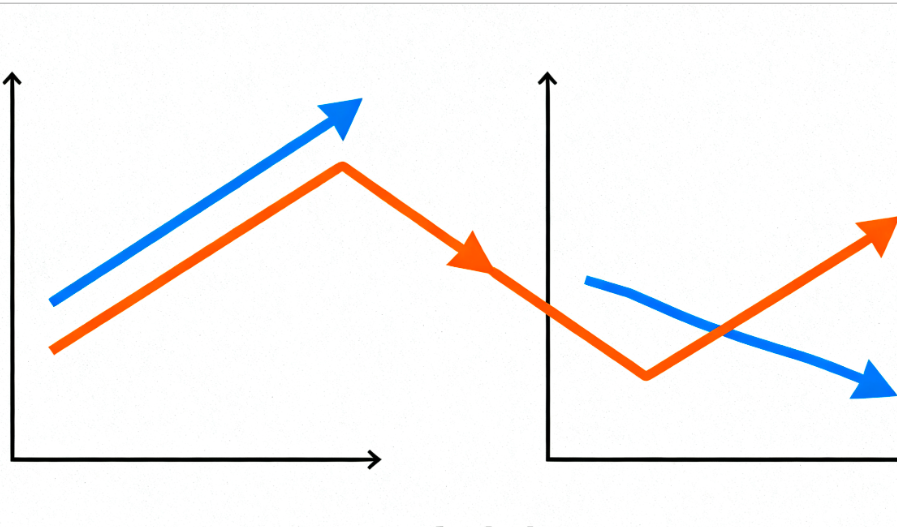
Compared to the market turmoil in April this year, this decline in the U.S. stock market was smaller, and the rebound came faster. As concerns about trade frictions eased, the three major U.S. stock indices rebounded across the board.
As of the close on October 13th, Eastern Time, the Dow Jones rose 1.29% to 46,067.58 points; the Nasdaq rose 2.21% to 22,694.608 points; and the S&P 500 rose 1.56% to 6,654.72 points.
Chinese concept stocks saw even more pronounced gains, with the Nasdaq Golden Dragon China Index closing up 3.21%. Popular Chinese concept stocks generally rose: NIO surged nearly 7%, Alibaba and JD.com rose over 4%, while XPeng Motors and Baidu gained over 3%.
Tech Stocks Lead the Market Again
After OpenAI announced a collaboration with Broadcom to jointly produce its first self-designed AI processor, AI-related tech stocks became the biggest winners in Monday's rebound.
The two companies will collaborate to develop custom AI chips and network system racks on a 10-gigawatt scale. OpenAI will lead the chip and system design, while Broadcom is responsible for co-development and deployment. Deployment is set to begin in the second half of 2026 and be fully completed by the end of 2029.
Addressing market concerns about an "AI investment bubble," OpenAI President Greg Brockman stated that these chips are far from sufficient; 10 gigawatts of computing power alone is not enough to support OpenAI's vision of achieving Artificial General Intelligence (AGI), calling it merely "a drop in the bucket."
Sam Stovall, Chief Investment Strategist at CFRA Research, said that AI remains a primary market driver, and it's not surprising that investors are buying on dips. However, he also cautioned that trade disputes are not yet resolved, and investors should remain cautious.
The AI boom has also been a key force driving this bull market. This bull market began after the S&P 500 hit bottom on October 12, 2022, and has since gained over 80%, with market capitalization increasing by a staggering $30 trillion. According to CFRA Research data, the S&P 500's gain of over 10% in the past 12 months is double the average gain in the third year of past bull markets.
Sam Stovall pointed out that among the 13 U.S. bull markets since World War II, seven lasted into the fourth year, with an average cumulative gain of 88%. This current bull market has nearly achieved this target in just three years, with the S&P 500's P/E ratio reaching 25 times, setting a historical record for the third year of a bull market.
Can the Rally Be Sustained?
While overall investor risk appetite is high, a key risk to be wary of is the excessive concentration of this market rally. Over the past three years, U.S. tech giants have consistently led the U.S. stock market gains, with Nvidia's stock price soaring nearly 1500% and Meta rising over 450%, while the performance of most other stocks has lagged.
As stock valuations approach historical highs, some investors are considering whether to reduce their equity allocations.
Stovall analyzed that U.S. stocks may face a severe test in 2026 due to excessive valuations, tariff and economic concerns, compounded by the fact that next year is a U.S. midterm election year, where policy uncertainty typically increases market volatility. On the other hand, historical experience suggests that the current market is not severely overextended nor destined for a crash, but it does mean that gains urgently need to return to a reasonable range.
The core drivers supporting the stock market and the real economy are: record investments in artificial intelligence and the data centers needed to support cloud computing. Meanwhile, companies are currently coping with tariff disruptions by temporarily increasing inventories and accepting lower profit margins rather than passing the tariff costs on to consumers.
Regarding this, Karen Dynan, Professor of Economics at Harvard University and Non-Resident Senior Fellow at the Peterson Institute for International Economics, stated that while this resilience is welcome, it is not sustainable, and we are likely to see economic growth slow down.
The economic trajectory is key to determining whether the bull market can continue. Modeling by Oxford Economics shows that if the U.S. tech sector slows down, the world's largest economy will gradually move towards a recession. The global growth rate in 2026 could drop from the baseline of 2.5% to 2%, and it might face more severe shocks.
















